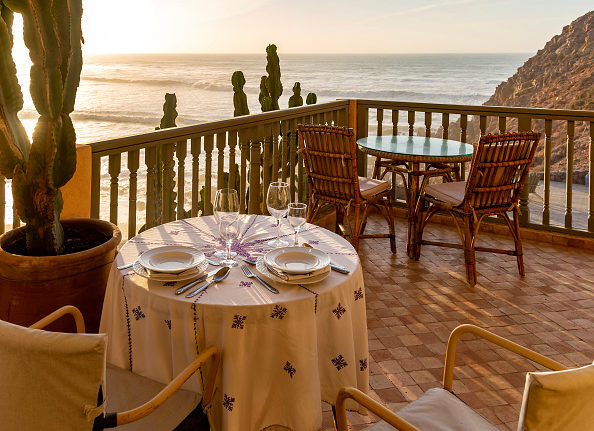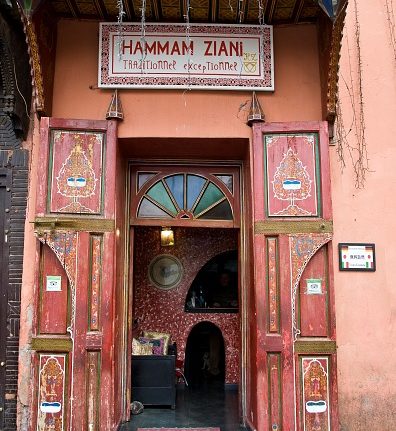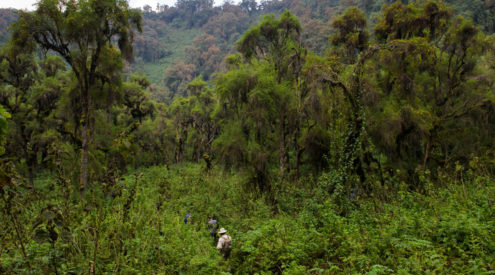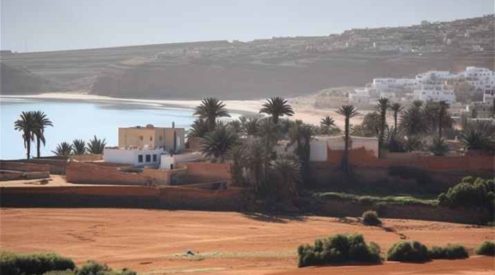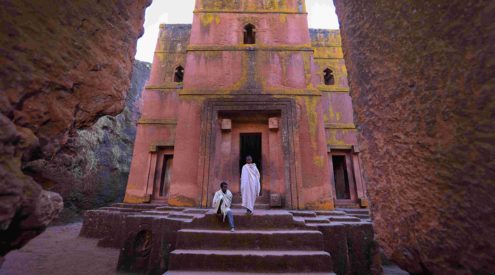Nestled in the northwestern corner of Africa, Morocco is a captivating country that offers an array of unique experiences for travellers. From the majestic Atlas Mountains to the bustling medinas, Morocco is a treasure trove of adventure, cuisine, art, and a vibrant lifestyle. In this article, we will take you on a journey through ten remarkable things to do in Morocco that will leave you spellbound and yearning for more.
1. Wander through the vibrant Medinas
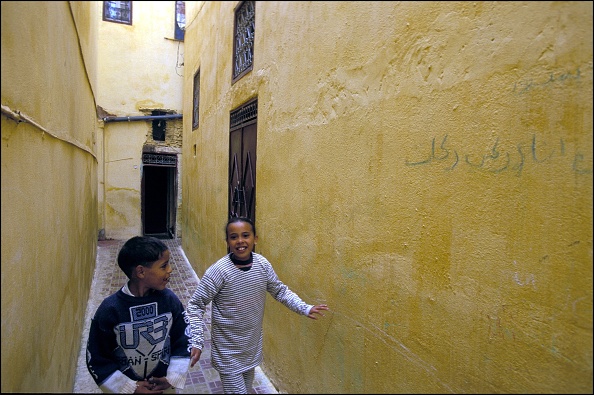
The Medina of Meknes- Zaouia gate. (Picture by Pool RUIZ/TREAL/Gamma-Rapho via Getty Images)
Begin your Moroccan adventure by immersing yourself in the bustling medinas of cities like Marrakech, Fez, and Chefchaouen. Lose yourself in the maze-like alleyways, where vibrant colours, exotic scents, and bustling marketplaces converge. Discover hidden treasures, haggle for handicrafts, and experience the vibrant atmosphere of these ancient cities.
A medina refers to the historic district found in Moroccan cities and towns. Throughout centuries, independent vendors and skilled artisans have established their businesses within the medina, offering a wide array of goods and services. From our perspective, the medina stands as the top attraction in Marrakech. While some vendors may employ playful sales tactics, it adds to the overall experience, allowing visitors to discern the genuine from the less authentic.
For your initial visit, we strongly recommend hiring a well-regarded guide due to the intricate layout of the medina, which can easily lead to confusion and getting lost within its labyrinthine streets.
ALSO READ: Desert countries to visit: 5 things to do in Morocco
2. Trek the majestic Atlas Mountains

TIZI N’TICHKA PASS, MARRAKESH-SAFI, MOROCCO – 2023/03/08: Portrait of a souvenir vendor by his roadside stall. (Picture by Jorge Fernández/LightRocket via Getty Images)
Embark on an exhilarating trek through the breathtaking Atlas Mountains. Traverse rugged terrains, picturesque valleys, and traditional Berber villages. Explore the stunning landscapes and be rewarded with awe-inspiring vistas at every turn. Mount Toubkal, North Africa’s highest peak, offers a challenging yet rewarding experience for adventure enthusiasts.
3. Indulge in traditional Moroccan cuisine
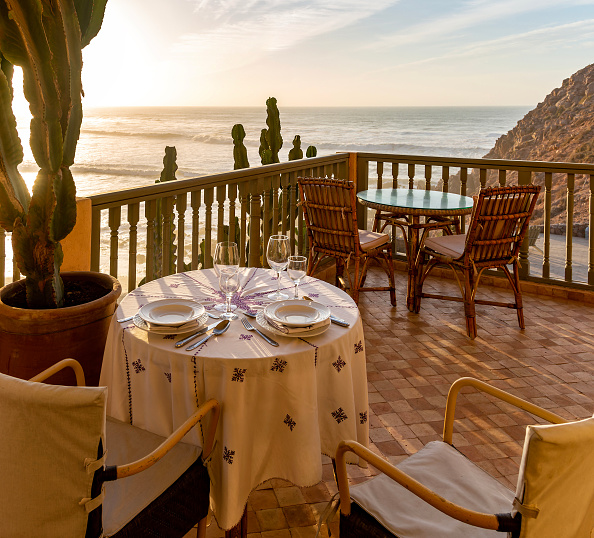
Table set for dinner for two hotel balcony overlooking Atlantic Ocean, Mirleft, Morocco, north Africa. (Picture by: Geography Photos/Universal Images Group via Getty Images)
Treat your taste buds to the rich flavours of Moroccan cuisine. Sample aromatic tagines, fragrant couscous, and mouthwatering pastries like pastilla. Savour traditional Moroccan mint tea and enjoy freshly squeezed orange juice in the vibrant street markets. Don’t miss the opportunity to try Harira, a hearty Moroccan soup, and explore the diverse culinary delights each region has to offer.
We have selected 5 dishes to try in Morocco.
4. Explore the Sahara Desert
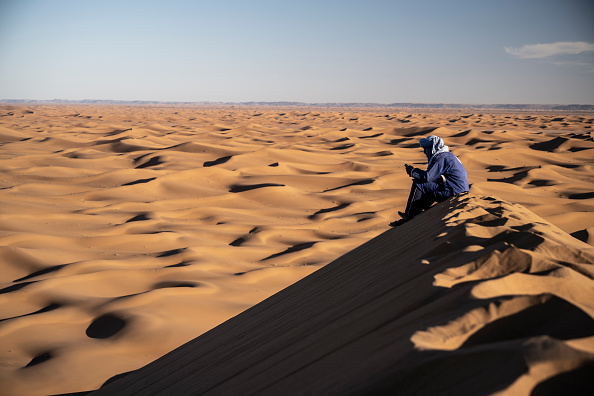
ERG CHEGAGA, ZAGORA, MOROCCO – 2023/02/28: Portrait of a Berber man sitting on top of a dune checking his mobile phone. (Picture by Jorge Fernández/LightRocket via Getty Images)
Embark on an unforgettable desert adventure by venturing into the mesmerizing Sahara Desert. Ride a camel through golden dunes and witness breathtaking sunsets over the vast expanse of sand. Spend a night in a traditional desert camp, marvel at the starry night sky, and experience the warmth and hospitality of the desert’s nomadic people.
5. Discover the ancient ruins of Volubilis
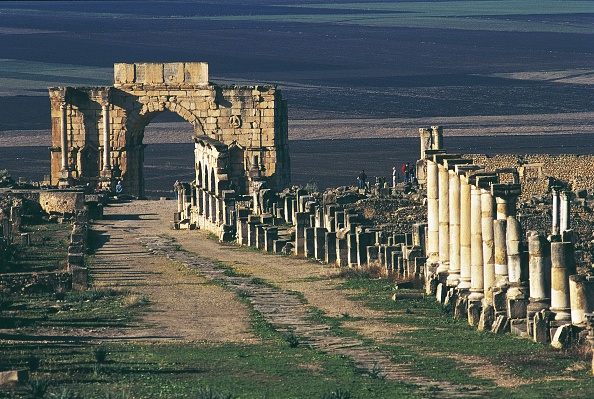
Decumanus maximus and Arch of Caracalla, archaeological site of Volubilis (UNESCO World Heritage Site, 1997), near Meknes, Morocco. Roman civilization, 1st-3rd century AD.
Step back in time and explore the ancient Roman ruins of Volubilis, a UNESCO World Heritage site. Wander through the remarkably preserved mosaic-adorned streets, marvel at the grandeur of the Arch of Caracalla, and immerse yourself in the rich history of this once-thriving Roman city.
During the Roman rule, political tensions were not absent in the city. In 40 AD, a revolt erupted among the residents; however, it was quelled by offering Roman citizenship and tax exemptions for a decade. Nevertheless, when the local Amazigh people started to exert pressure on the Roman Empire, the Romans eventually withdrew in 285 AD. Despite this, the local populations of Syrians, Jews, Berbers, and Greeks continued to converse in the local Latin language.
In the eighth century, with the arrival of Islam in the region, the churches were demolished, but the city remained inhabited until the 11th century. Although Volubilis sustained its position as a capital city long after the fall of the Roman Empire, it lost its administrative centre status when the nearby city of Fez was established. Subsequently, residents were relocated to the mountainous village of Moulay Idriss.
In the 18th century, the region was struck by the devastating Lisbon earthquake, leading to the destruction of many structures. Even before the French Protectorate era, in the 1830s, the French army initiated excavations at the site.
6. Dive into Moroccan art and architecture
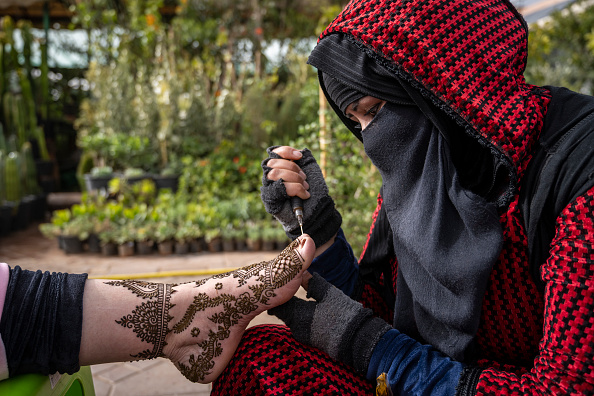
JEMAA EL-FNAA, MARRAKESH, MARRAKESH-SAFI, MOROCCO – 2023/02/17: Muslim woman decorating the foot of a client with henna in the Jemaa el-Fnaa square in Marrakesh. (Picture by Jorge Fernández/LightRocket via Getty Images)
Marvel at the intricate architecture and exquisite craftsmanship found in Morocco’s palaces, mosques, and madrasas. Visit the iconic Koutoubia Mosque in Marrakech, explore the beautifully tiled Medersa Bou Inania in Fez, and admire the breathtaking beauty of the Hassan II Mosque in Casablanca. Explore art galleries and museums to appreciate the diverse artistic expressions of Moroccan artisans.
7. Experience a Hammam ritual
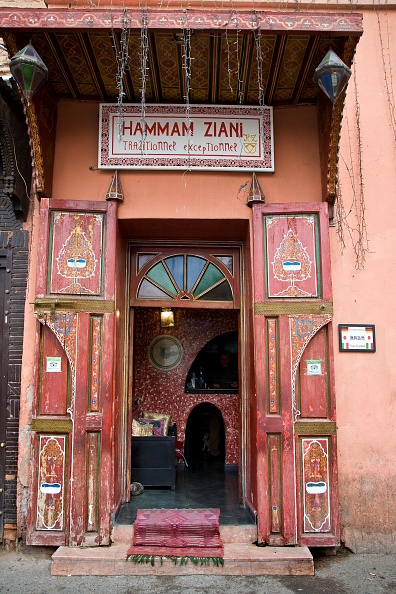
Hammam Ziani, Marrakech, Morocco. (Picture by Giovanni Mereghetti/Education Images/Universal Images Group via Getty Images)
Pamper yourself with a traditional Moroccan hammam experience. Indulge in a steam bath, exfoliating scrub, and a relaxing massage. This centuries-old ritual not only rejuvenates the body but also offers a glimpse into Moroccan culture and wellness traditions.
Inspired by the Roman baths that the Arabs discovered during their conquest of Syria, the modern hammam has evolved into its current form. Traditionally, it consists of multiple rooms, with at least three rooms gradually increasing in temperature, leading up to the hottest room at 50°C. The aim is to acclimatize the body to progressively intensifying heat, resulting in suppler skin and open pores.
The Moroccan hammam is not only a cultural experience but also a beauty ritual with numerous benefits. To fully enjoy its advantages, it is recommended to spend a minimum of 30 minutes and a maximum of 1 hour inside, finding relaxation either on the floor or on benches. During this time, a Kessala, an expert in scrubbing, may apply natural Moroccan black soap to your entire body. After a rest period of about fifteen minutes, the Kessala rinses off the soap using a Kessa glove and proceeds to rub your body to eliminate impurities.
These steps offer a deep exfoliation experience, which can be astonishing for newcomers as they witness the removal of dead skin and unclogging of pores. Following a thorough rinse, Moroccan Rhassoul clay is applied to the body and hair. This clay serves as an excellent cleansing agent, leaving the body soft and supple.
After these treatments, a nourishing massage provides further nourishment to the skin, concluding the experience with a delightful touch of mint tea. This combination of rituals creates a moment of unparalleled tranquillity and relaxation.
8. Take a road trip along the Atlantic coast
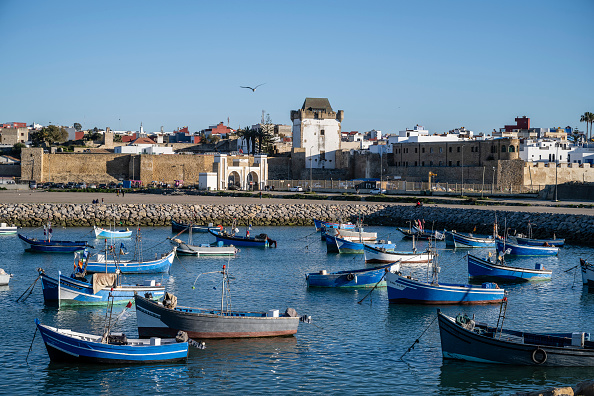
ASILAH, TANGER-TETOUAN-AL HOCEIMA, MOROCCO – 2023/03/15: Blue fishing boats anchored in the port of Asilah. (Picture by Jorge Fernández/LightRocket via Getty Images)
Embark on a scenic road trip along Morocco’s enchanting Atlantic coast. Drive from Casablanca to Essaouira, stopping at charming coastal towns like El Jadida and Safi along the way. Enjoy fresh seafood, soak up the sun on pristine beaches, and witness the dramatic beauty of the Atlantic Ocean.
9. Attend a traditional Moroccan festival
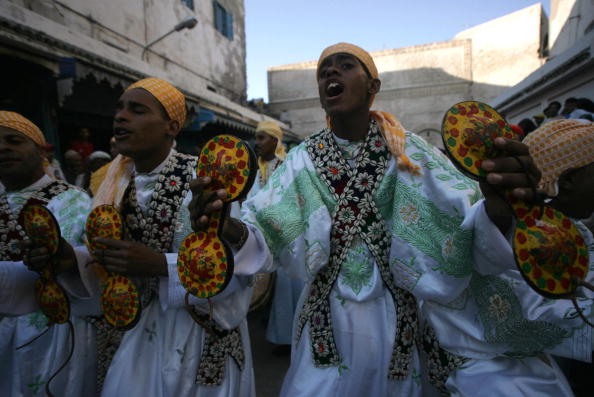
SMIMMOU, MOROCCO: Gnawa people dance in the streets of Essaouira, 20 June 2007 before the opening of the 10th edition of the Gnaoua World Music Festival of Essaouira (“Gnaoua and Musics of the World”). The Gnaoua World Music Festival is held annually in Essaouira and provides a platform for exchanges and a meeting point of music and dialogue between foreign artists and the mystical Gnaoua (also Gnawa) musicians. (Picture by ABDELHAK SENNA/AFP via Getty Images)
Immerse yourself in the vibrant spirit of Morocco by attending a traditional festival. From the colourful Moussems (local religious festivals) to the lively Gnawa World Music Festival in Essaouira, these celebrations offer a glimpse into Moroccan culture, music, and dance. Join the locals in their joyful festivities and create lasting memories.
10. Shop for authentic souvenirs
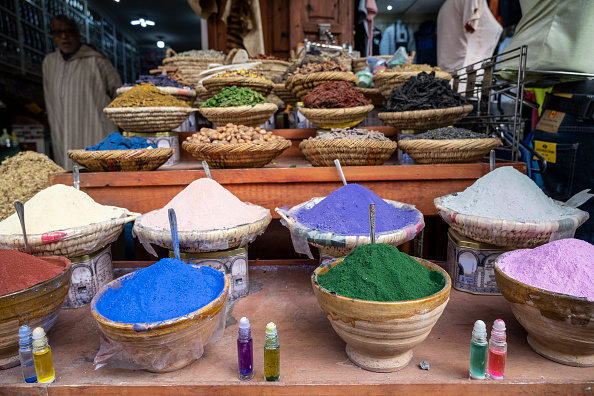
MARRAKESH, MARRAKESH-SAFI, MOROCCO – 2023/02/18: Spice shop of many colours in the medina of Marrakesh. (Picture by Jorge Fernández/LightRocket via Getty Images)
No visit to Morocco is complete without exploring its bustling souks. Haggle for unique souvenirs such as intricately designed carpets, leather goods, spices, and ceramics. Experience the art of bargaining and bring home a piece of Morocco’s rich craftsmanship.
Follow us on social media for more travel news, inspiration, and guides. You can also tag us to be featured.
TikTok | Instagram | Facebook | Twitter
ALSO READ: 5 incredible sights to visit in Ethiopia









